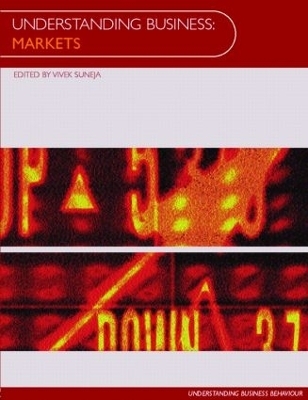How do markets work? Are there different types of market? Markets are central to business enterprise and to a wide range of social activities. Following the collapse of communism, the market economy was proclaimed as the only way forward, the major agent behind the end of history. This collection of readings introduces the student to the workings of the market, explaining both the reasons for its success and its shortcomings. Throughout, the text encourages a critical approach by showing that there is more than one way of studying the market and by demonstrating the diversity of market economies. In particular the book explores: the social nature of market economies, arguing that the market is a socially constructed institution; the range of approaches to the study of the market: Marxist, Austrian, Keynesian and institutional economics are discussed as alternatives to the neo-classical mainstream; the diversity of market economies with an emphasis on the differences between Anglo-American, European and Asian economic models; the historical development of markets and the continuing impact this has; the extent and impact of globalisation and the costs and benefits of markets. With chapters by Will Hutton, John Gray and Eric Hobsbawn, this Reader provides an excellent introduction for undergraduate and postgraduate students of business (including MBA students) and for students of economics. This book is one of a series of four Readers for the Open University course Understanding Business Behaviour (B200), an introductory course in the BA in Business Studies programme.
Vivek Suneja was, at the time of editing this book, a Lecturer in Strategy at the Open University Business School. He is now a Professor in Delhi University.
Introduction SECTION 1: THE EVOLUTION OF THE MODERN WORLD ECONOMY 1 The global economy, AD 1400–1800: comparisons and relations 2 The British industrial revolution SECTION 2: ECONOMIC AGENTS 3 Households 4 More on consumer demand 5 Organizations SECTION 3: HOW MARKETS WORK 6 Competition and power in markets SECTION 4: MARKET FAILURE 7 When markets fail SECTION 5: THE GLOBAL MARKET 8 International trade 9 Protectionism and industrialization: a historical perspective 10 Multinational corporations 11 Globalization in the age of empire SECTION 6: MARKETS: GOOD SERVANTS, BAD MASTERS? 12 The diversity of capitalisms 13 Capitalism and global free markets 14 Why did East Asia grow so fast?
| Erscheint lt. Verlag |
1.9.2006
|
| Reihe/Serie |
Understanding Business
|
| Zusatzinfo |
41 Tables, black and white; 26 Line drawings, black and white |
| Verlagsort |
London |
| Sprache |
englisch |
| Maße |
189 x 246 mm |
| Gewicht |
560 g |
| Themenwelt
|
Wirtschaft ► Volkswirtschaftslehre |
| ISBN-10 |
0-415-40501-7 / 0415405017 |
| ISBN-13 |
978-0-415-40501-0 / 9780415405010 |
| Zustand |
Neuware |



